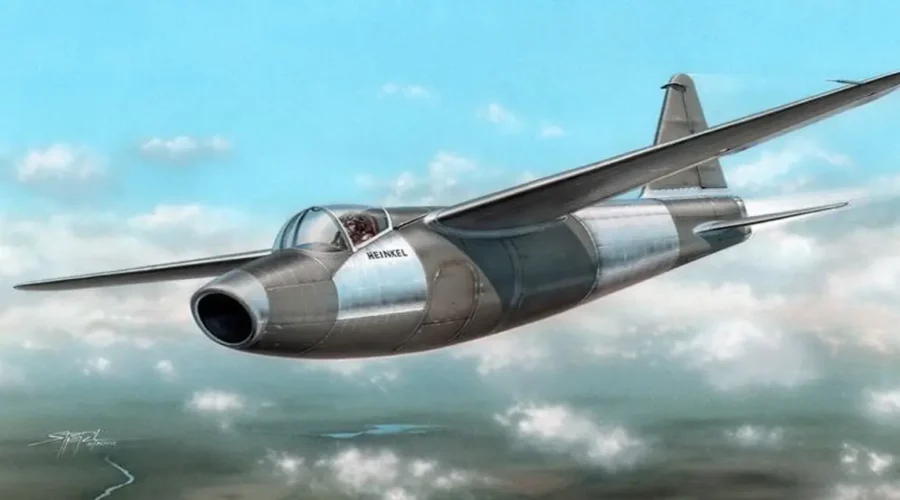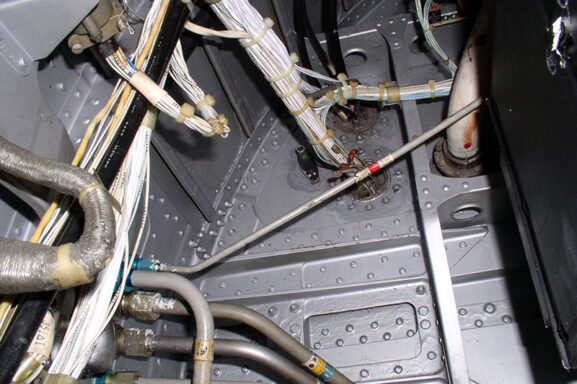The Heinkel HE 178: The birth of the Jet Age
The Heinkel He 178 was the world’s first aircraft to fly powered solely by a turbojet engine, making its historic maiden flight on August 27, 1939, near Rostock, Germany, piloted by Erich Warsitz Although its short endurance (around ten minutes) and modest speed failed to impress Luftwaffe officials, the He 178 delivered invaluable data on jet propulsion.
The prototype never saw combat, was later displayed in Berlin’s Technikmuseum, and was destroyed in an Allied bombing raid in 1943.Its pioneering legacy paved the way for later German jet fighters like the He 280 and Me 262, sparking the dawn of the jet age.
Early Development
The Heinkel He 178, a pioneering aircraft developed by Heinkel Flugzeugwerke in the late 1930s, holds the distinction of being the first airplane in history powered solely by a turbojet engine. Conceived from the visionary collaboration between engineer Hans von Ohain and industrialist Ernst Heinkel, the aircraft was built as a private venture and carried out in deep secrecy, largely independent of official Luftwaffe support. At its heart lay the HeS 3B turbojet—Ohain’s groundbreaking design featuring a centrifugal compressor and axial-flow turbine—a leap forward from the era’s piston-engine technology.
Maiden Flight and Performance
On 27 August 1939, test pilot Erich Warsitz took flight in the He 178 V1 at the Marienehe airfield near Rostock. After a preliminary taxi hop three days earlier, Warsitz’s maiden flight lasted about six minutes and reached speeds estimated between 600–632 km/h (373–393 mph). Despite a minor flameout due to a bird strike, he safely glided the prototype back to runway . The aircraft retained fixed landing gear during these initial flights, prioritizing engine testing over aerodynamic refinement).
Technical Specifications and Testing
The He 178 was a compact, single-seat shoulder-wing monoplane with a duralumin fuselage and wooden wings reinforced with heat-resistant coatings. It measured approximately 7.48 m in length with a 7.20 m wingspan and had an empty weight around 1,620 kg, maximum takeoff weight of about 1,998 kg). Its modest endurance of roughly ten minutes highlighted jet propulsion’s early limitations, particularly fuel efficiency and range, yet its high-speed capability signaled the future direction of aviation.
Historical Impact and Legacy
Though the Reich Aviation Ministry was unimpressed—criticizing its short range, lack of weaponry, and diversion of resources, especially once war began—the He 178 laid essential groundwork for future jet programs. Its success inspired the development of more advanced jet aircraft, such as the twin-engine He 280 and ultimately the Messerschmitt Me 262, the world’s first operational jet fighter.. Following around a dozen test flights, the prototype was exhibited briefly in Berlin before being destroyed in a 1943 Allied bombing raid. Today, scale models and replicas, such as those at Rostock-Laage Airport and the Planes of Fame in California, preserve its legacy.
In essence, while the Heinkel He 178 never saw operational deployment, its historic maiden flight marked the true dawn of the jet age. By validating von Ohain’s jet propulsion concept and influencing subsequent design paths, the He 178 earned its place as a watershed moment in aeronautical engineering and a testament to visionary experimentation.
The Heinkel He 178 may never have seen combat, but its first flight on August 27, 1939 marked an irrevocable turning point in aviation history by proving turbojet propulsion could lift an aircraft.
In my view, the He 178 stands as a testament to bold innovation—its modest performance belies the immense vision behind it. It reminds us that breakthrough moments often begin with humble prototypes.

Rakibul Islam is a 1st Batch Student of “Airport & Airlines Ground Operation Foundation “course under Aviation.com.bd Academy. This Article was written by him as a part of the assignment.



